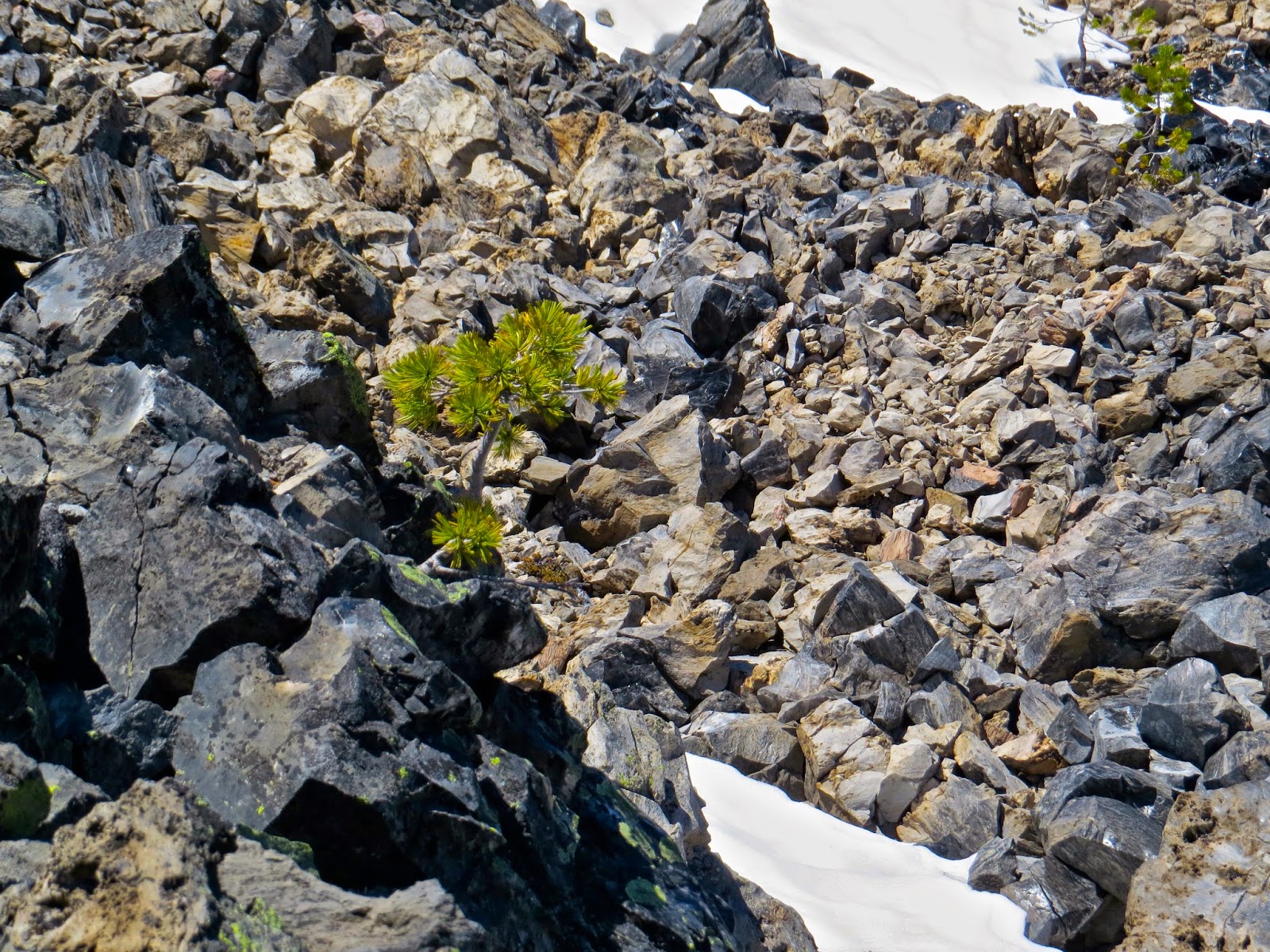This national monument,
located south of Bend, OR, is so extensive it took us two trips to really begin
to understand its significance. Good friends from Seattle, Ric and Jan, came
down when we first arrived in central OR to show us some of their favorite
spots and this one was on the list.
Only, there was a slight problem - on the day in early June that we went there, several roads, trails, and the visitor centers were not open yet. Since we were already there, we made the best of it and saw what we could. Gary and I made a second trip after the summer season started a few days ago.
Only, there was a slight problem - on the day in early June that we went there, several roads, trails, and the visitor centers were not open yet. Since we were already there, we made the best of it and saw what we could. Gary and I made a second trip after the summer season started a few days ago.
After the two visits, I left
with many facts, and needed some downtime to “process” all the information on
volcanic activities at Newberry. One of
the first things that hit me was how uneducated I was about the United States
northwest – particularly the Cascade Range.
Growing up in Appalachia, I thought I knew about mountains. Now I
discover just how OLD and settled the Appalachians are in comparison to the
relatively NEW geologic life of the Cascade Range.
So, back to what you can see
during a visit to the NNVM. First, I strongly
encourage hitting the Lava Lands Visitor Center where you will find a great
interpretive center to help understand what you are about to see as you tour
the monument.
Next we headed up the road
to the top of Lava Butte – a cinder cone rising about 500 feet above the
volcanic landscape around it. This cone was created during an eruption around
7000 years ago. (About 400 cones from various eruptions occur throughout the Newberry
site.)
The road is an 8% grade
spiral to the top. The short trip is
interesting, particularly since this narrow road serves traffic going up and
down the butte. But once you reach the top, you have a fantastic view of the
surrounding area – including Mt Hood around 100 miles away.
The Lava Butte rim looks
down into a crater and has an active fire-lookout station sitting atop.
Besides all the lava, Gary found some swifts
flying in and out of nests in dead tree trunks near the parking lot.
There is a paved trail
behind the visitor center, which goes through a section of the large lava
fields. Along the trail are signs of
life – first lichen, then some small bits of vegetation and also sporatic small
trees beginning to change this large desolate landscape. Occasionally an old remnant of a tree from long
ago appears almost ghostlike.
The NNVM is very large –
have I said that already? It is listed
as a 500 square mile volcano. Many of us
think of a volcano as a mountainous cone structure that erupts, forming a
caldera. (Caldera is defined as a large
crater formed in a volcano after the eruption and collapse of the walls.) And, many volcanoes are of the cone type –
but not Newberry.
Newberry is a composite
volcano formed from various types of volcanic eruptions – both the “classic”
cone massive eruptions and the many volcanic vents. The Newberry caldera site is located about 12
miles by road from the lava lands section and is so different from the fields
of lava around it. The caldera covers 17
square miles, has two beautiful lakes (Paulina and East), Paulina Falls, campgrounds, trails, and
Paulina Peak (elev. 7,984’) the highest point on the volcano rim.
Also within
the caldera is a magnificent obsidian (volcanic glass) flow that is only 1300
years old!
 |
| East Lake in Newberry Caldera |
 |
| Paulina Falls |
 |
| Edge of the Obsidian Flow and its Lake |
 |
| Leslie, Jan and Gary near top of the obsidian flow |
 |
| Great obsidian specimen |
 |
| more of the obsidian flow |
Volcanic activity at this
site is about 400,00 years old. 350,000 years ago a huge eruption of Newberry
mountain sent lava flow about 50 miles N to Smith Rock (creating huge lava
fields) and moving a section of the Deschutes River near Bend (more about that later). About 75,000 years ago, another
eruption created the caldera, which evidentially filled with water forming one
lake. Hot pumice and ash with that event welded and solidified into the rock
forming Paulina Falls. A later eruption
created a ridge in the caldera, separating the water into 2 lakes. There are
many lava flow events within the past 7000 years. And most recently, was the
obsidian flow.
Newberry Volcano is often called
Oregon’s sleeping giant. It is the
largest and oldest volcano in the Cascades range volcanic arc. Scientists are
busy monitoring this giant – and its seismic and geothermal activity (hot
springs in the caldera lakes). However, just like all the geothermal activity
in other locations, like Yellowstone, it’s a great place to visit and learn
more about this Earth we live on.
I take comfort in knowing
that all of this is happening in geologic time, leaving my presence no more
than a piece of dust in space.







Nature pics AND people pics! I am impressed! Great descriptions of your travels!
ReplyDeleteGlad you are appreciating the people pics. Gary is trying hard to remember to take people pics.
Delete